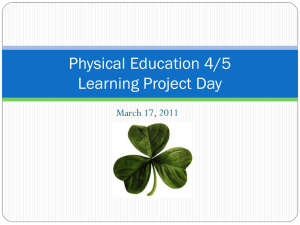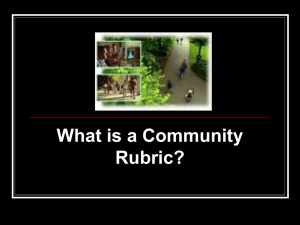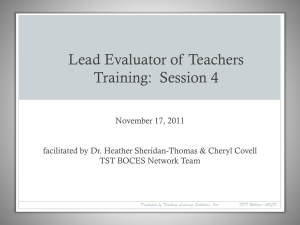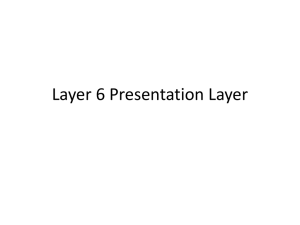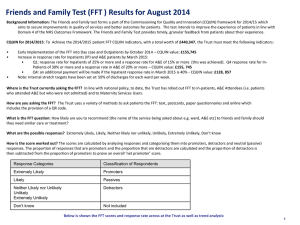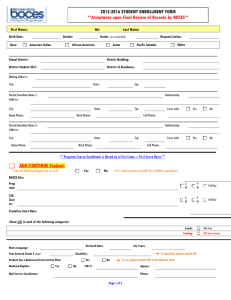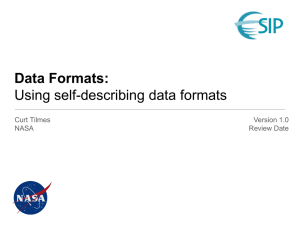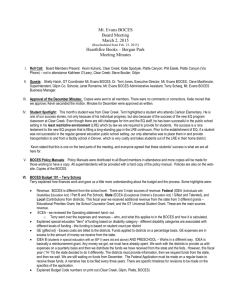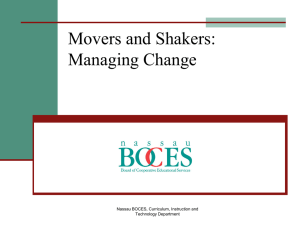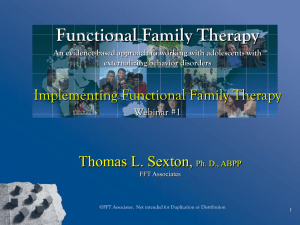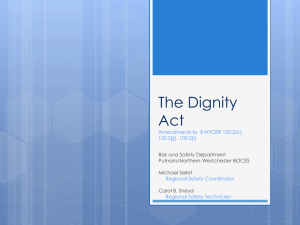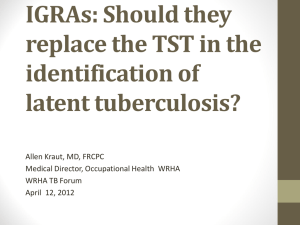Lead Evaluator of Teachers Session 7 04.05.12
advertisement
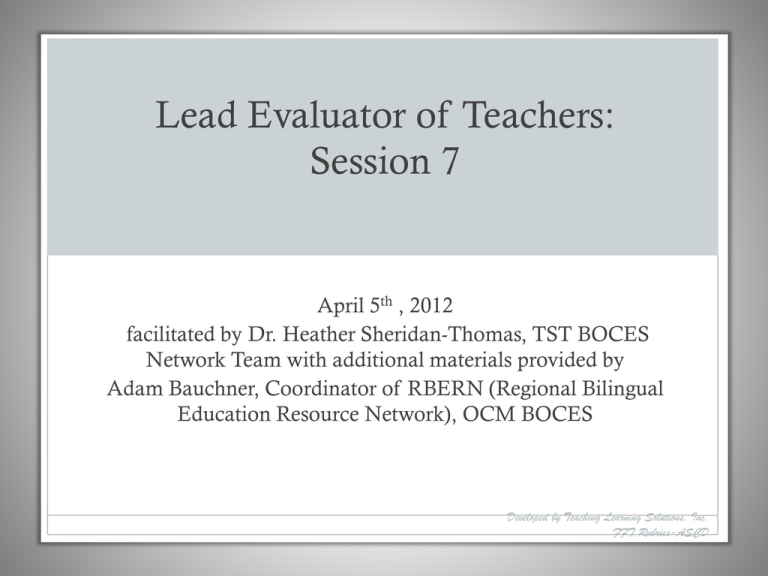
Lead Evaluator of Teachers:
Session 7
April 5th , 2012
facilitated by Dr. Heather Sheridan-Thomas, TST BOCES
Network Team with additional materials provided by
Adam Bauchner, Coordinator of RBERN (Regional Bilingual
Education Resource Network), OCM BOCES
Developed by Teaching Learning Solutions, Inc.
FFT Rubrics-ASCD
Workshop Objectives: SESSION 7
Participants will:
• Review the meaning of “Objective” in the Observer Skill & Accuracy
Rubric
• Identify problems with samples of collected evidence and suggest how they
might be corrected.
• Gain an understanding of considerations for observing classrooms which
include students who are English Language Learners.
• Share and learn about a variety of formats and tools for collecting evidence
during classroom observations.
• Discuss collection of evidence for Domain 1/Standards 1 & 2
• Understand the focus of Session 8 and potential plans for summer & next
year.
Lead Evaluator of Teachers
Session 7 AGENDA
•
Review of the meaning of “Objective” in the Observer Skill & Accuracy Rubric
•
Identifying problems with samples of collected evidence and suggesting how they
might be corrected.
•
Presentation/discussion focused on considerations for observing classrooms which
include English Language Learners
•
Sharing and discussion of a variety of formats and tools for collecting evidence
during classroom observations.
•
Discuss collection of evidence for Domain 1/Standards 1 & 2
•
Review the focus on Session 8 and potential plans for summer & next year.
•
Wrap Up & Looking Ahead
Developed by Teaching Learning Solutions, Inc.
FFT Rubrics-ASCD
TLS Observer Skill and Accuracy Rubric
4
Evidence is a Factual Reporting of Events
Element 2
• It includes teacher and student actions and/or
behaviors
• Teacher presented the content from the front of room.
• It includes statements made and questions posed by
the teacher and the students
• “Bring your white boards, markers and erasers to the carpet
and sit on your square.”
• It includes artifacts prepared by the teacher,
students, or others.
• Task cards, journals, lesson plans, etc.]
• It includes quantifiable information about time,
student participation, resource use, etc.
• 9:14 – 9:29- Warm-up. 8 of 22 Ss finished at 9:20, sat still
until 9:29
• It includes an observed aspect of the environment
5
• Desks were arranged in groups of four
Trends in Evidence Samples
• Summary statements
• “Provided relevant examples and scaffolding to discuss how we
"measure your foot" or "blood pressure" driving home the point that we
need "different tools for different problems" In this way the Clinometers
and meter stick were introduced before directions were given for
outside task.”
• Conclusions/judgments
• “Students were engaged during small group activities.”
• A lack student evidence
• T: Who has a prediction?
• T: What is your method?
• T: Why did you use tangent?
6
Trends in Evidence Samples
• Vague information
• “Teacher circulates”
• Misalignment to the criteria
7
Evidence Analysis
• Your table will be assigned a set of evidence
examples from the Evidence Analysis worksheet.
• Your first job is to decide why your examples are
problematic. You may use the 5 problem areas just
discussed (Summary Statements, Judgments/
Conclusions, Lack of Student Evidence, Vagueness,
Misalignment) or add your own problem area.
• Your second job is to explain why you chose that
problem area and how you would “fix” the evidence.
Developed by Teaching Learning Solutions, Inc.
FFT Rubrics-ASCD
Evidence Analysis/
Evidence Problems
• Each group will have an opportunity to share
one example and how they labeled, described
and fixed the problem. Groups may also talk
about any examples they struggled with.
• Possible Problem Areas: Summary
Statements, Judgments, Lack of Student
Evidence, Vagueness, Misalignment, Other
• In your groups please have a brief discussion
of why it is important not to include
judgments in your observation notes.
Considerations for Observing
Classrooms with
English Language Learners
• In the TST BOCES region, the Ithaca City
School District has by far the largest English
Language Learner student population, at 5%
(270 students). Other districts do have
English Language Learners, with 1 % (17
students) in Dryden for example.
• Materials for this presentation were
developed primarily by Adam Bauchner,
formerly of ICSD, now the Coordinator for
RBERN at OCM BOCES. {ESL PPT}
Alternate Notetaking
Formats
• Notetaking formats should align to observation
purpose.
• As we discuss various notetaking formats today, we
will always discuss what purposes they are wellsuited to. For example:
• Verbatim scripting is well-suited to a teacher’s first
observation, to an overall sense of the teacher’s
instructional style and abilities.
• Selective Scripting is suited to focus on a particular
teacher skill, especially a communication skill like
questioning or response to student answers.
Developed by Teaching Learning Solutions, Inc.
FFT Rubrics-ASCD
Alternate Notetaking
Forms Sharing
• Take a few minutes to talk with a partner at your
table about any notetaking formats you use, besides
verbatim and selective scripting. Describe the format
and the purpose for which you use it.
• Please be prepared to share one alternate format
example per pair, unless all of the formats you
discussed have already been shared.
Developed by Teaching Learning Solutions, Inc.
FFT Rubrics-ASCD
Engagement Tally
• Can be used to capture teacher behaviors in
chosen categories, such as
• Instruction, Behavior Correction, Monitoring, Praise, and
Waiting
• Indicates whether or not individual students
are on task during a given class period
• + On Task
0 Off Task
Time On Task Classroom
Observation
Name _____Start Time_____ End Time_____ Student #____
Teacher Behaviors
I Instruction BC Behavior Correction M Monitoring P Praise W Waiting
Student Behaviors
+ On Task
Time Slot
T Behavior
0 Off Task
Time Slot
Student Behavior
Engagement Tally
Total Number of Teacher Observations ___Total Number of Student Observations___
Observed Behavior
Total Slots
Total Percentage of Total Time
Instruction
Behavior Correction
Monitoring
Praise
Waiting
Observed Behavior
On Task
Off Task
Total Slots
Total Percentage of Total Time
Aligning Alternate Format
Evidence to Rubrics
• Look at the examples of alternate
formats including those shared by your
colleagues.
• For each format, discuss which Rubric
elements/indicators it might be used to
collect evidence for. What purpose is it
best suited to?
• Take notes on the form and be
prepared for a brief share out.
Evidence for Domain 1/
Standards 1 & 2
• Domain 1/Standards 1 & 2 are not easily observed
during a classroom observation.
• Please work with the people at your table to compile
a list of evidence you might collect to assess a
teacher’s performance in relation to Domain
1/Standards 1 & 2
• Please note any comments or concerns about
collecting this evidence.
• Please designate a notetaker and hand in one copy
of the note sheet (take notes directly on the rubric,
using the back of the sheet if needed.)
Upcoming Sessions
Session 8 is a HALF DAY in May (choose May 23 8:30-11:30 or
May 29, 12- 3:00). You will be asked to script and level a full
length lesson, which will be assessed against the Observer Skill
& Accuracy Rubric. This should be considered FORMATIVE
ASSESSMENT OR PRE-ASSESSMENT, in that it will
inform the work we do next year toward complete calibration.
We will also discuss Observation Post -Conferences and
Observation write-ups. If you would like to engage in peer
review of an Observation write-up, bring two copies of one
write-up (this is voluntary). There will be an alternate activity
provided. There will also be opportunity for reflection on &
evaluation of the entire Lead Evaluator series.
• Beginning this summer, TST BOCES will offer calibration
trainings for Danielson 2007 (ASCD) & NYSUT rubrics, using
the free NYSED True North Logic platform and for the
Danielson 2011 rubric using the Teachscape platform.
Evaluation and Closure
• Got It/Want It/Questions on
stickies
• PowerPoint and Materials will be
on NT website
Thank you for your
participation!




